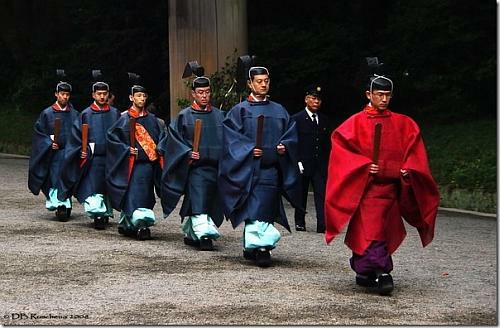This article was posted by CrystalWind.ca.
Shinto: The Indigenous Religion of Japan
- Details
- Written by AndEl
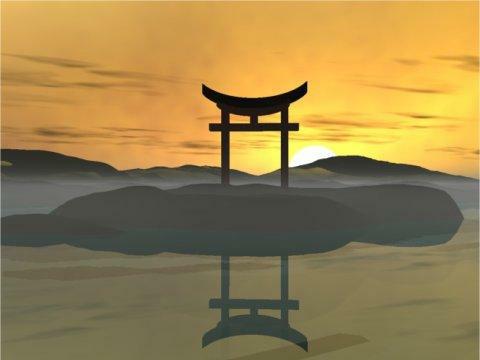
Shinto: The Indigenous Religion of Japan
Shinto (also Shintoism) is the term for the indigenous religious beliefs and practices of Japan. Shinto has no founder, no official sacred scriptures, and no fixed creeds, but it has preserved its main beliefs and rituals throughout the ages.
The word Shinto, which comes from the Chinese shin tao, meaning "the way of kami", came into use in order to distinguish indigenous Japanese beliefs from Buddhism, which had been introduced into Japan in the 6th century AD.
Shinto (together with Buddhism) is intimately tied to Japanese society and culture. Shinto's relationship with other religions in Japan are generally cooperative and harmonious. Shintoists insist on maintaining their own characteristics and inner depth while working toward the peaceful coexistence of human beings.
Fast Facts
| Founded: | No known date or founder. Shinto is the indigenous religion of Japan. |
| Adherents: | 3-4 million |
| Texts: | Kojiki (Records of Ancient Matters); Nihongi or Nihon shoki (Chronicles of Japan) |
| Beliefs: | Polytheism based on the kami, ancient gods or spirits. |
| Practices: | Worship and offerings to kami at shrines and at home. Purification rituals. |
History
 Shinto has no founder or founding date. When the Japanese people and Japanese culture became aware of themselves, Shinto was already there. Yayoi culture, which originated in the northern area of the island of Kyushu around the 3rd or 2nd century BC, is directly related to later Japanese culture and Shinto. Among the primary Yayoi religious phenomena were agricultural rites and shamanism. Early shamans (miko) performed the ceremonies; eventually those of the Yamato tribe did so on behalf of the other tribes and their chieftain assumed duties that led to headship of the Shinto state.
Shinto has no founder or founding date. When the Japanese people and Japanese culture became aware of themselves, Shinto was already there. Yayoi culture, which originated in the northern area of the island of Kyushu around the 3rd or 2nd century BC, is directly related to later Japanese culture and Shinto. Among the primary Yayoi religious phenomena were agricultural rites and shamanism. Early shamans (miko) performed the ceremonies; eventually those of the Yamato tribe did so on behalf of the other tribes and their chieftain assumed duties that led to headship of the Shinto state.
Confucianism reached Japan in the 5th century AD, and by the 7th century it had spread among the people together with Chinese Taoism and yin-yang (harmony of two basic forces of nature) philosophy. All of these stimulated the development of Shinto ethical teachings. With the gradual centralization of political power, Shinto began to develop as a national cult as well. Shinto became political by the 8th century when Yamato writers ascribed divine origins to the imperial family and so claimed legitmacy for rule. By the beginning of the 10th century, about 3,000 shrines throughout Japan were receiving state offerings.
Buddhism was officially introduced into Japan in AD 552 and developed gradually. In the 8th century there emerged tendencies to interpret Shinto from a Buddhist viewpoint. Shinto kami were viewed as protectors of Buddhism; hence shrines for tutelary kami were built within the precincts of Buddhist temples.
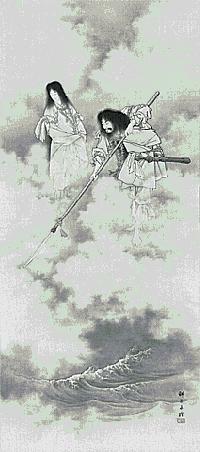 Shinto kami were made equivalent to deva (the Buddhist Sanskrit term for “gods”) who rank highest in the Realm of Ignorance, according to Buddhist notions. By the late 8th century kami were thought to be incarnations of buddhas and bodhisattvas. Bodhisattva names were given to kami, and Buddhist statues were placed even in the inner sanctuaries of Shinto shrines. In some cases, Buddhist priests were in charge of the management of Shinto shrines.
Shinto kami were made equivalent to deva (the Buddhist Sanskrit term for “gods”) who rank highest in the Realm of Ignorance, according to Buddhist notions. By the late 8th century kami were thought to be incarnations of buddhas and bodhisattvas. Bodhisattva names were given to kami, and Buddhist statues were placed even in the inner sanctuaries of Shinto shrines. In some cases, Buddhist priests were in charge of the management of Shinto shrines.
From the beginning of the Kamakura period (1192–1333), theories of Shinto-Buddhist amalgamation were formulated. The most important of the syncretic schools to emerge were Ryobu (Dual Aspect) Shinto and Sanno ("King of the Mountain") Shinto. The anti-Buddhist Ise or Watarai Shinto appeared in the city of Ise during the 13th century as a reaction against the Shinto-Buddhist amalgamation; it attempted to exclude Buddhist accretions and also tried to formulate a pure Japanese version.
In 1603 the Tokugawa shogunate was founded in Edo (Tokyo), and contact between Shinto and Confucianism was resumed. Scholars tried to interpret Shinto from the standpoint of Neo-Confucianism, emphasizing the unity of Shinto and Confucian teachings. Schools emerged based on the teachings of the Chinese philosophers Chu Hsi and Wang Yang-ming, and Neo-Confucianism became an official subject of study for warriors.
Fukko (Restoration) Shinto began toward the end of the 17th century. Advocates of this school maintained that the norms of Shinto should not be sought in Buddhist or Confucian interpretations but in the beliefs and life-attitudes of their ancestors as clarified by philological study of the Japanese classics. Motoori Norinaga (1730–1801) represented this school. His emphasis was on the belief in musubi (the mystical power of becoming or of creation), which had been popular in ancient Shinto, and on a this-worldly view of life, which anticipated the eternal progress of the world in ever-changing mutations. These beliefs, together with the inculcation of respect for the Imperial line and the teaching of absolute faith—according to which all problems beyond human capability were turned over to kami—exercised great influence on modern Shinto doctrines.
In the early Meiji period (1868-1912), the religion was divided into Shrine Shinto (Jinja) and Sect Shinto (Kyoha). An Imperial Rescript on Education made it the formal foundation of the state. The divinity of the emperor was stressed, based on Confucian concepts of loyalty to the emperor and the state.
During the latter part of the 19th century, new religious movements emerged out of the social confusion and unrest of the people. What these new movements taught differed widely: some were based on mountain-worship groups, which were half Buddhist and half Shinto; some placed emphasis on purification and ascetic practices; and some combined Confucian and Shinto teachings. The new religious movements were based mostly on individual religious experiences and aimed at healing diseases or spiritual salvation. These sectarian Shinto groups, numbering 13 during the Meiji period (1868–1912), were stimulated and influenced by Restoration Shinto. They can be classified as follows:
-
Revival Shinto sects: Izumo-oyashiro-kyo (or Taisha-kyo), Shinto-taikyo, Shinri-kyo
-
Confucian sects: Shinto Shusei-ha, Shinto Taisei-kyo
-
Purification sects: Shinshu-kyo, Misogi-kyo
-
Mountain worship sects: Jikko-kyo, Fuso-kyo, On take-kyo (or Mitake-kyo)
-
"Faith-healing" sects: Kurozumi-kyo, Konko-kyo, Tenri-kyo
After the Second World War, Shinto lost its status as an official religion, shrine membership was not required and contributions became voluntary. The "nationalization" of Yasukuni shrine, home of the remains of war dead, is a current issue.
Texts
Shinto does not have any philosophical literature or official scripture that can be compared to texts like the Bible or the Qur'an. But the Kojiki (Records of Ancient Matters) and the Nihongi or Nihon shoki (Chronicles of Japan), are in a sense the sacred books of Shinto. They were written in AD 712 and 720, respectively, and are compilations of the oral traditions, mythology and ceremonies of ancient Shinto. But they are also books about the history, topography, and literature of ancient Japan.
Also important is the collection of 50 books known as Engishiki, completed in 927. These deal with the laws governing shrine ceremonies, the organization of religious leadership, and official prayers and liturgies.
Beliefs
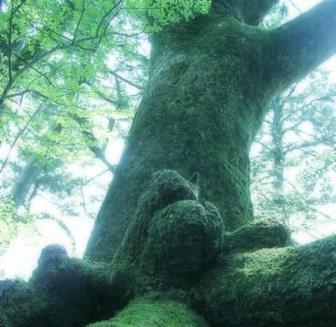 At the core of Shinto are beliefs in the mysterious creating and harmonizing power (musubi) of kami and in the truthful way (makoto) of kami. The nature of kami cannot be fully explained in words, because kami transcends the cognitive faculty of man. Devoted followers, however, are able to understand kami through faith and usually recognize various kami in polytheistic form.
At the core of Shinto are beliefs in the mysterious creating and harmonizing power (musubi) of kami and in the truthful way (makoto) of kami. The nature of kami cannot be fully explained in words, because kami transcends the cognitive faculty of man. Devoted followers, however, are able to understand kami through faith and usually recognize various kami in polytheistic form.
The kami began as the mysterious forces of nature associated primarily with permanent features in the landscape, such as unusual mountains, rocky cliffs, caves, springs, trees and stones. Many folk tales evolved around these holy places, which often refer to animal possession and chiefly involve foxes, badgers, dogs and cats betwitching people. Celestial bodies play only incidental roles as Shinto kami.
Today, parishioners of a shrine believe in their tutelary kami as the source of human life and existence. Each kami has a divine personality and responds to truthful prayers. The kami also reveals makoto to people and guides them to live in accordance with it. In traditional Japanese thought, truth manifests itself in empirical existence and undergoes transformation in infinite varieties in time and space. In Shinto all the deities are said to cooperate with one another, and life lived in accordance with a kami's will is believed to produce a mystical power that gains the protection, cooperation, and approval of all the particular kami.
Shinto holds a generally positive view of human nature. A common Shinto saying is that "man is kami's child." First, this means that a person was given his life by kami and that his nature is therefore sacred. In actuality, however, this divine nature is seldom revealed in man, which gives rise to the need for purification (see Practices, below). Second, it means that daily life is made possible by kami, and, accordingly, the personality and life of people are worthy of respect. An individual must revere the basic human rights of everyone as well as his own.
Shinto is described as a religion of tsunagari ("continuity or community"). The Japanese, while recognizing each man as an individual personality, do not take him as a solitary being separated from others. On the contrary, he is regarded as the bearer of a long, continuous history that comes down from his ancestors and continues in his descendants. He is also considered as a responsible member of various social groups.
Motoori Norinaga stated that the human world keeps growing and developing while continuously changing. Similarly, Japanese mythology speaks of an eternity of history in the divine edict of Amaterasu. In its view of history, Shinto adheres to the cyclical approach, according to which there is a constant recurrence of historical patterns. Shinto does not have the concept of the "last day": there is no end of the world or of history. From the viewpoint of finite individuals, Shintoists also stress naka-ima ("middle present"), which repeatedly appears in the Imperial edicts of the 8th century. According to this point of view, the present moment is the very center in the middle of all conceivable times. In order to participate directly in the eternal development of the world, it is required of Shintoists to live fully each moment of life, making it as worthy as possible.
Historically, the Shinto beliefs and rituals of each local community has played an important role in harmonizing different elements and powers. After the Meiji Restoration (1868), Shinto was used as a means of spiritually unifying the people during repeated wars. Since the end of World War II, the age-old desire for peace has been reemphasized. The General Principles of Shinto Life proclaimed by the Association of Shinto Shrines in 1956 has the following article: "In accordance with the Emperor's will, let us be harmonious and peaceful, and pray for the nation's development as well as the world's co-prosperity."
Practices
Shinto ceremonies are designed to appeal to the kami for benevolent treatment and protection and consist of abstinence (imi), offerings, prayers and purification (harae). Purification, by washing with water, symbolically removes the dust and impurities that cover one's inner mind.
A traditional Japanese home has two family altars: one, Shinto, for their tutelary kami and the goddess Amaterasu Omikami, and another, Buddhist, for the family ancestors. Pure Shinto families, however, will have all ceremonies and services in Shinto style.
Shinto does not have weekly religious services. Some may go to the shrines on the 1st and 15th of each month and on the occasions of rites or festivals (matsuri), which take place at fixed times during the year (see Holidays, below). Shinto followers visit the shrine at their convenience; though some devotees pay respect to the shrine every morning.
Shinto shrines are regarded as the home of the kami. The most important shrine building is the inner sanctuary (honden), in which a sacred symbol called shintai ("kami body") or mitama-shiro ("divine spirit's symbol") is enshrined. The usual symbol is a mirror, but sometimes it is a wooden image, a sword, or some other object. In any case, it is carefully wrapped and placed in a container. It is forbidden to see it: only the chief priest is allowed to enter inside the inner sanctuary.
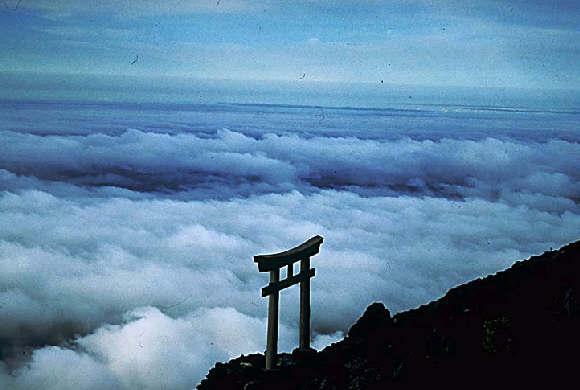 A torii (gateway) stands at the entrance of shrine precincts. Proceeding on the main approach, a visitor comes to an ablution basin where the hands are washed and the mouth is rinsed. Usually he or she will make a small offering at the oratory (haiden) and pray. Sometimes a visitor may ask the priest to conduct rites of passage or to offer special prayers.
A torii (gateway) stands at the entrance of shrine precincts. Proceeding on the main approach, a visitor comes to an ablution basin where the hands are washed and the mouth is rinsed. Usually he or she will make a small offering at the oratory (haiden) and pray. Sometimes a visitor may ask the priest to conduct rites of passage or to offer special prayers.
Various Shinto rites of passage are observed. The first visit of a newborn baby to the tutelary kami, which occurs 30 to 100 days after birth, is to initiate the baby as a new adherent. The Shichi-go-san (Seven-Five-Three) festival on November 15 is the occasion for boys of five years and girls of three and seven years of age to visit the shrine to give thanks for kami's protection and to pray for their healthy growth.
January 15 is Adults' Day. Youth in the village used to join the local young men's association on this day. At present it is the commemoration day for those Japanese who have attained their 20th year. The Japanese usually have their wedding ceremonies in Shinto style and pronounce their wedding vows to kami. Shinto funerals, however, are not common, due to Shinto concerns about ritual purity. The majority of the Japanese have their funerals in Buddhist style.
There are other Shinto rites for occupations or daily life, such as a ceremony of purifying a building site or for setting up the framework for a new building, a purifying ceremony for the boilers in a new factory, a completion ceremony for a construction works, or a launching ceremony for a new ship.
Holidays
Each Shinto shrine has several major festivals (matsuri) each year, including the Spring Festival (Haru Matsuri or Toshigoi-no-Matsuri), Autumn or Harvest Festival (Aki Matsuri, or Niiname-sai), an Annual Festival (Rei-sai), and the Divine Procession (Shinko-sai). The Divine Procession usually takes place on the day of the Annual Festival, and miniature shrines (mikoshi) carried on the shoulders are transported through the parish.
 The order of rituals at a grand festival is usually as follows:
The order of rituals at a grand festival is usually as follows:
-
Purification rites (harae), commonly held at a corner of the shrine precincts before participants come into the shrine but sometimes held within the shrine before beginning a ceremony.
-
Adoration. The chief priest and all the congregation bow to the altar.
-
Opening of the door of the inner sanctuary (by the chief priest).
-
Presentation of food offerings. Rice, sake wine, rice cakes, fish, seaweed, vegetables, salt, water, etc., are offered but animal meat is not, because of the taboo on shedding blood in the sacred area. In the past cooked food was usually offered to kami, but nowadays uncooked food is more often used. In accordance with this change, the idea of entertaining kami changed to that of thanksgiving.
-
Prayer. The chief priest recites prayers (norito) modeled on ancient Shinto prayers. These prayers were compiled in the early 10th century and were based on the old belief that spoken words had spiritual potency.
-
Sacred music and dance.
-
General offering. Participants in the festival make symbolic offerings using little branches of the evergreen sacred tree to which strips of white paper are tied.
-
Taking offerings away.
-
Shutting the door of the inner sanctuary.
-
Final adoration.
-
Feast (naorai). Since World War II it has become popular to have a brief sermon or speech before the feast.
Most Shinto festivals are observed generally in accordance with the above order. On such occasions as the Annual Festival, various special rites may be held—for example, special water purification (misogi) and confinement in shrines for devotional purposes (o-komori), the procession of a sacred palanquin (o-miyuki) or of boats (funa matsuri), a ceremonial feast (toya matsuri), sumo wrestling, horseback riding (kurabe-uma), archery (matoi), a lion dance (shishi mai), and a rice-planting festival (o-taue matsuri).
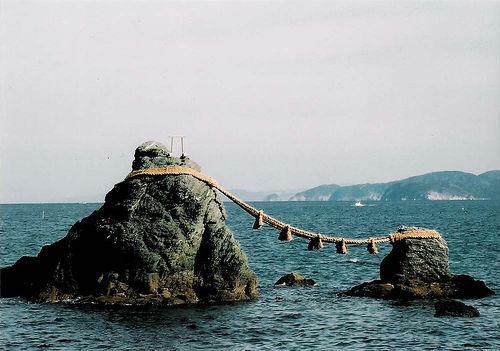
Source Here
© CrystalWind.ca 2024. All content (articles, imagery, fair use) & design protected. Written permission required for copying. All rights reserved.
Join the Conversation Now! Comment Below! ![]()

Spirit Animal Totem Of The Day!
Crystal Of The Day!
Latest Articles
CrystalWind.ca is free to use because of
donations from people like you.
Donate Now »

Unlock Your Light: Join Lightworkers Worldwide on CrystalWind.ca!
Articles: Shinto
Follow Us!
Who is Online Now
We have 14696 guests and no members online
Featured This Month
Yule Blessings
Yule The Winter Solstice or Yule is one of the Lesser Wiccan Sabbats, and it ... Read more
Yule - The Winter Solstice
Yule, or the Winter Solstice is one of the lesser Sabbats of the Witches calen... Read more
Yule By The Hedgewitch
Yule Yule is a solar festival and one of the Minor Sabbats. This is when the ... Read more
Gods and Monsters of the Winter Solstice
La Befana Because Santa Claus has presided over the Yule festival for the las... Read more
Freeze Up Moon
Snake – Copper and Malachite – Thistle – Orange October 24 to November 21 ... Read more
Winter Solstice - A Season of Giving
CELEBRATING THE WINTER SOLSTICE The December solstice is also known as the ... Read more
Twas The Night Before Yuletide
Yule Chant Brightly burns the Yule log tonight Magic dances in firelight Ho... Read more

